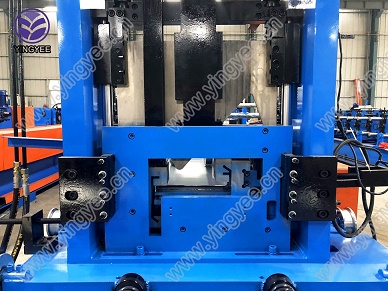
The Evolution and Importance of Welded Tube Mills
Welded tube mills have become a vital component in the manufacturing industry, primarily because of their efficiency and the strong demand for welded tubular products across a multitude of sectors. This technology has revolutionized the way metal tubes are produced, transitioning from traditional methods to advanced processes that enable higher production rates, improved quality, and reduced costs.
Historical Context
The inception of welded tube mills dates back to the early 20th century when the demand for pipes and tubes surged due to industrialization. Initially, tubes were produced using methods like seamless manufacturing, which, while strong, was time-consuming and expensive. The development of the welded tube mill technology offered a solution to these challenges. By utilizing electric resistance welding (ERW) and other welding techniques, manufacturers could produce tubes quickly and at a lower cost, responding promptly to the burgeoning market needs.
Current Technology
Modern welded tube mills operate using advanced machinery that enhances productivity and quality. These mills typically consist of various stages, including forming, welding, sizing, and cutting. The process begins with a flat strip of metal, which is fed into the mill where it is shaped into a tube. The edges of the strip are then brought together and welded using high-frequency electrical currents, thus forming a continuous tube.
The subsequent steps involve sizing the tube to meet specifications and cutting it into desired lengths. Automation and control systems are integral in modern mills, ensuring that each stage of production is monitored for quality and efficiency. For example, advanced sensors assist in maintaining optimal welding temperatures, leading to consistent and reliable welds.
Applications of Welded Tubes

Welded tubes serve a myriad of applications across various industries. In the construction sector, they are used for structural purposes, supporting buildings and bridges. In the automotive industry, welded tubes are crucial for manufacturing chassis and exhaust systems. Additionally, they play a significant role in HVAC systems, oil and gas distribution, and even in the medical field for equipment like scaffolding and tubes used in various medical devices.
The versatility of welded tubes makes them essential in ensuring the safety and effectiveness of products in these industries. Their ability to be fabricated in different sizes and specifications allows for customized solutions tailored to specific industry needs.
Advantages of Welded Tube Mills
The benefits of using welded tube mills are numerous. Firstly, they enable the production of a continuous length of tube, minimizing waste. Additionally, the welding process allows for the creation of stronger joints compared to traditional methods, resulting in higher overall structural integrity. The capability to manufacture tubes in various materials, including stainless steel, carbon steel, and alloys, further highlights the adaptability of welded tube mills.
Moreover, advancements in technology have led to improved energy efficiency in welded tube mills. Modern mills are designed to consume less power, reducing their overall carbon footprint. This aspect is increasingly crucial as industries worldwide strive for more sustainable manufacturing practices.
Future Prospects
As we look to the future, the welded tube mill industry is poised for continued growth. Emerging technologies, such as automation and artificial intelligence, promise to further enhance efficiencies and quality. The push for sustainability will also drive innovation in production processes, aiming for a balance between high output and minimal environmental impact.
In conclusion, welded tube mills represent a critical segment of the manufacturing landscape, providing essential products that underpin a wide range of industries. Their evolution from rudimentary welding techniques to sophisticated automated systems underscores their importance in modern manufacturing. As technological advancements continue to unfold, welded tube mills will undoubtedly adapt and thrive, supporting an ever-growing demand for high-quality welded tubes.